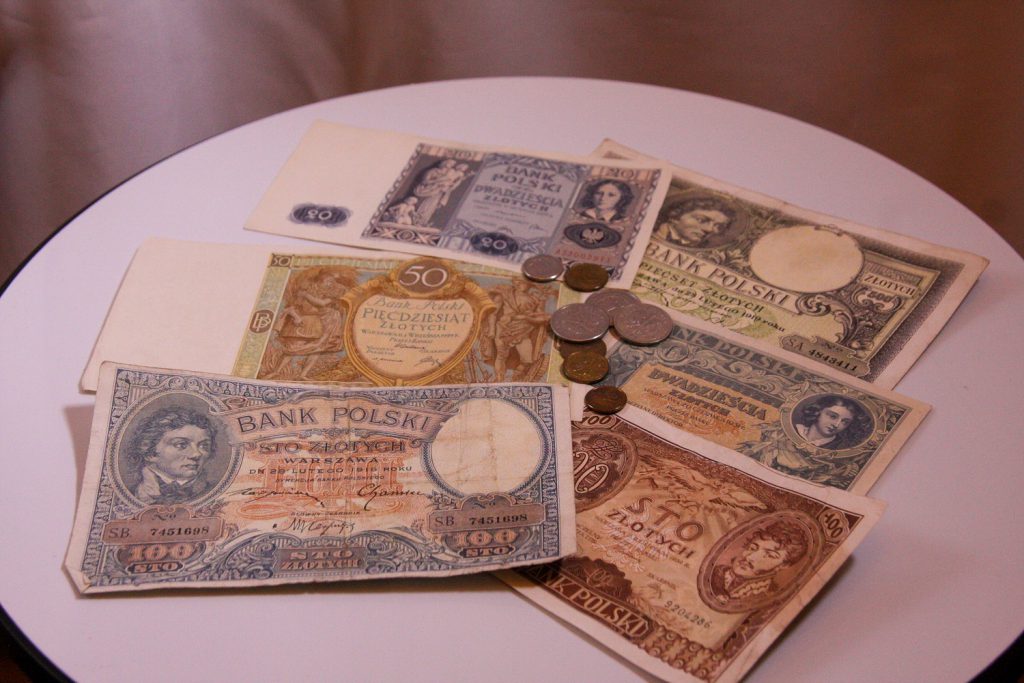
In 1924, the Polish government replaced the Mark with the Zloty, which remained Poland’s currency until the outbreak of World War II in 1939.
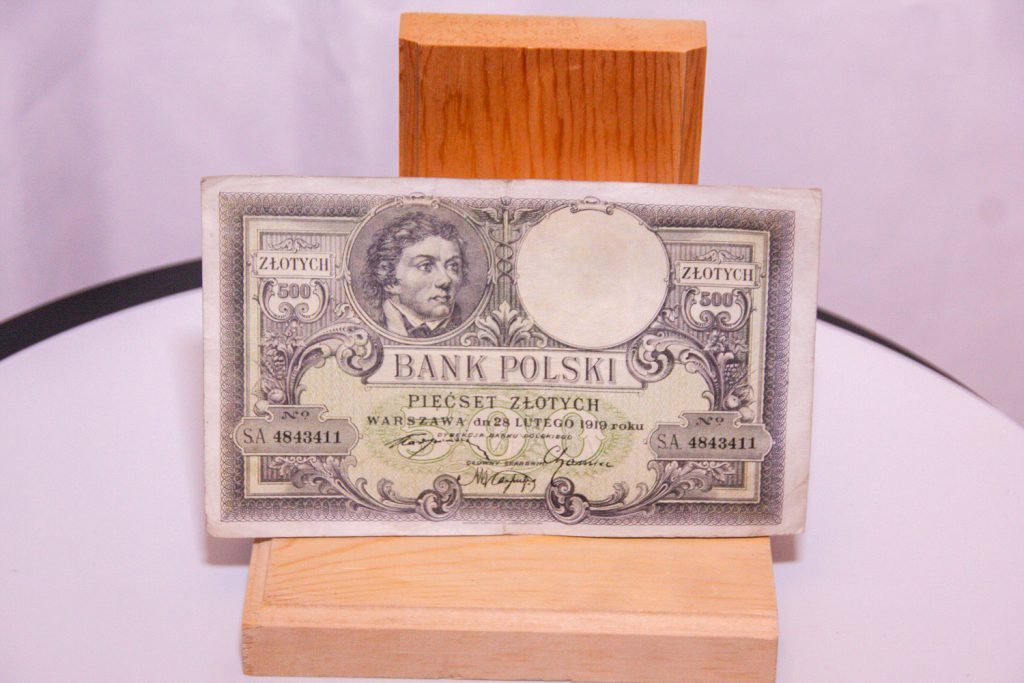
The front of the 500 zlotych note depicts Tadeus Kosciuszko, one of Poland’s greatest national heroes. In addition, it also states that it was printed in 1919. In that year, Poland’s national legislature, the Sejm, voted to create a new currency called the “Zloty,” which Poles had used prior to the county’s partition in the 1790s. However, the creation of a new monetary system was delayed until 1925 by a combination of war with the Soviet Union and hyperinflation.
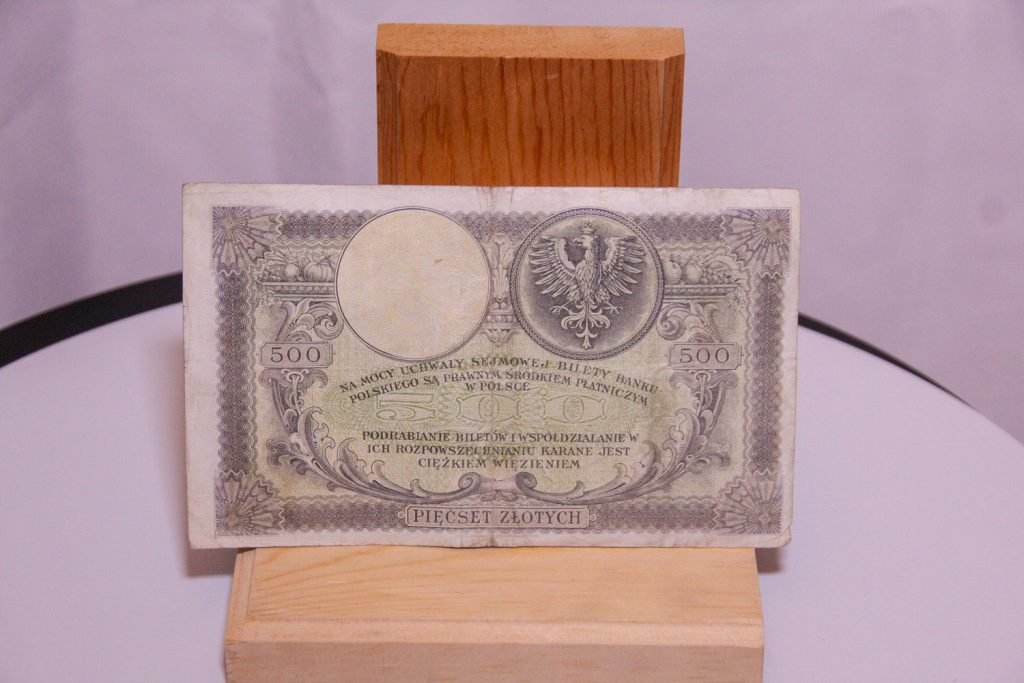
The rear of the note includes an image of a white-crowned eagle, modern Poland’s official coat of arms. The origin of Poland’s association with the white eagle goes back to the mythical founder Lech. But the first use of a white “crowned” eagle on minted coins came during the reign of Przemyslaw II (1295-1296). It remained Poland’s emblem until its partition in the 1790s. Thus, the Second Polish Republic’s decision to use it as its currency reflected a conscious effort to link itself with historic Poland.
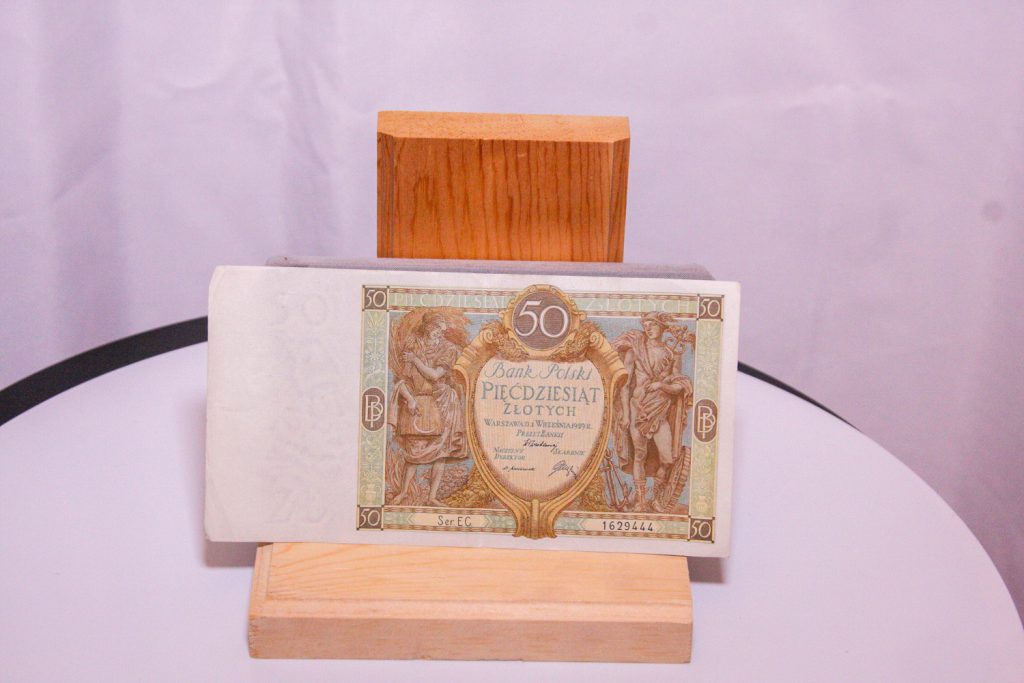
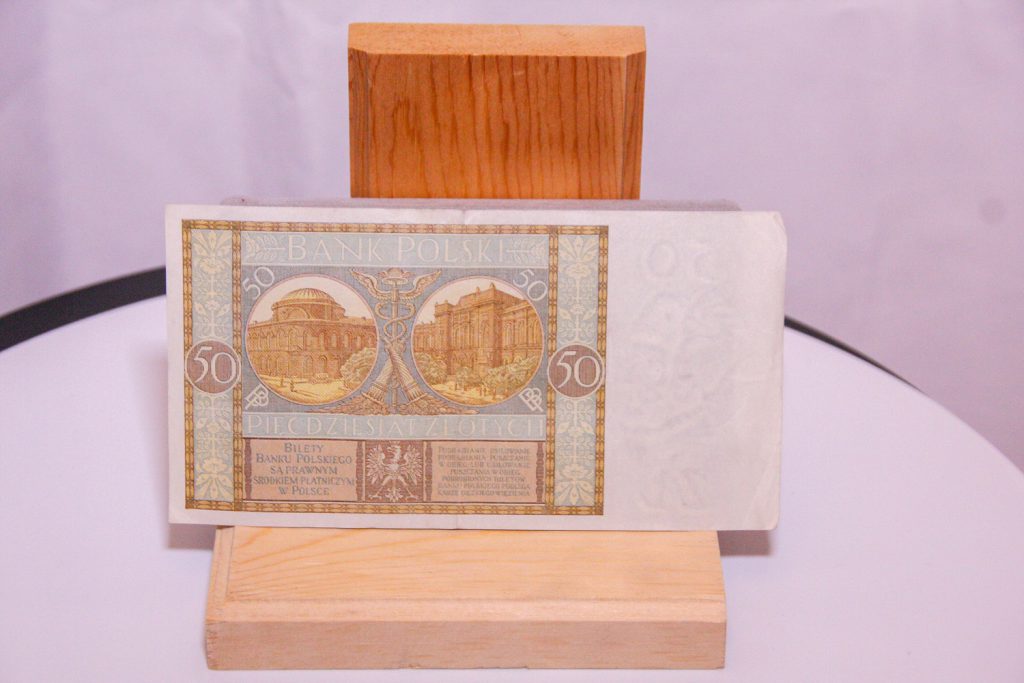
By contrast, the 50 zlotych note depicts two figures on either side of the front. The lady with the sheaf of wheat symbolizes a fruitful harvest, but possibly also the regeneration of a fallen nation. On the right is the Greek God Hermes, who symbolizes wealth, good fortune, and commerce. On the rear are the old and new Bank Polski buildings. Between them is Hermes’s staff surrounded by two cornucopia, which symbolize an abundance of produce.
Tadeus Kosciuszko is considered a national hero of Poland by many. Growing up in East Poland on his father’s land, watching him treat their servants fairly, he developed a sense of liberty and freedom for all people. Besides these equitable qualities, he is most revered and remembered for his involvement in the American Revolution. Without his efforts and engineering prowess, particularly with his involvement in the Battle of Saratoga, it is fair to say that the war may not have been won without him. After his involvement in the American Revolution, Kosciuszko returned to Poland and joined their own uprising against the Russians. Although they did not win, he is still remembered and celebrated for how he brought the people of Poland together and led them with confidence, regardless of their status. Today, he is still held in very high regard in both Poland and the U.S., with statues and foundations dedicated to him and his achievements.
Author: Ruth Tucker, History major, Elms College.